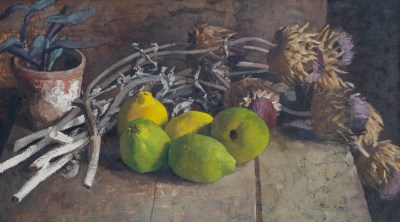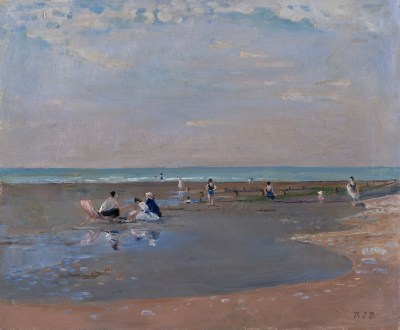Eight secret spots inside the RA
Eight secret spots inside the RA
By Maurice Davies
Published 30 October 2015
Nuns’ Walk, the Hayloft and the Butler’s Staircase… not Halloween films, but names of the many mysterious places hidden around the Royal Academy. Our new Head of Collections investigates.
-
I’ve now spent three weeks as the RA’s head of collections and every day brings new discoveries. There are tens of thousands of things for me to discover in the art collection, the library and the archive. And there are hundreds of staff to get to know. But for now I want to focus on strangely named behind-the-scenes parts of the buildings. I’m writing about them now, while I have the chance, as some of them have already been handed over to the contractors working on the RA250 redevelopment. I also anticipate that in a few weeks I’ll take all the strangeness for granted, as other staff do.
As a newbie, I’m still confused when someone says to me “You can get there if you go along Nuns’ Walk”, “it’s in the Hayloft”, or “pop up the Butler’s Staircase”. These names are often rooted in Burlington House’s winding, 350-year history; the staircase, our archivist Mark Pomeroy tells me, dates back to the route the servants took around the house in the 1660s – and, once the RA moved in in 1867, it was used by the Housekeeper and Head Porter who until the 1960s lived in an apartment at the top of the stairs. Nuns’ Walk, meanwhile, was apparently given its name after repeated ghostly encounters with the nuns who once inhabited a convent on the site.
Particularly inexplicable is the Bunk, the soon-to-be vacated base of the talented art handlers, where from the 1970s Norman Rosenthal, the former Exhibitions Secretary, would enthusiastically attend the RA’s best staff parties.
-
"The Bunk"

The Bunk

Our art handlers' hard hats

Inside the Bunk

Work bench
-
Most art deliveries, along with everything else imaginable, pass at some stage through West Yard, a passage connecting Burlington House with Burlington Gardens – which is notoriously difficult to keep tidy because it is so much in demand. One of the benefits of the redevelopment will be new routes for moving art into and around the buildings.
The secret space with the most evocative name is the Brush Wash Mezzanine. To me that name rings with poetry, but the explanation is simple – it’s a mezzanine in the room where historically brushes were washed. The Brush Wash is now used for screen printing as part of the Royal Academy Schools.
The spaces occupied by the Schools are very special: they are working spaces, bashed and bruised; they include plaster casts of antique sculpture and historical architecture; and everywhere there is new art in the process of being made. Magically, there’s a fully functioning 19th-century life drawing studio and a quaint students’ library, bursting with art books and painted an incongruous persimmon pink. Remarkably, the students pay no fees and are selected entirely on merit rather than ability to pay.
-

The Brush Wash
The Brush Wash is now used by students of the RA Schools for silkscreen printing and spray-painting
Photo: Harriet Baker
-
Squeezed into a roof space is the Schools canteen, dimly lit and filled with earnest and lively conversation and the smell of home cooking. I spent under five minutes in there, getting a cup of tea and was overwhelmed by the desire to travel 35 years backwards in time and be at college again.
The most precious space I’ve visited, with the most limited access, is the Silver Vault. Behind a heavy, stiff iron door are baize-lined drawers of antique silver, much of it given by newly appointed Academicians as part of a quest to establish a full-scale silver dinner service.
Some of these spaces will be more accessible after the redevelopment, and a few will disappear, replaced by improved facilities for visitors and for the staff who currently struggle to deliver 21st-century services in an 18th-19th-century building. A few spaces will remain largely hidden, seen by outsiders only rarely, on special occasions.
I hope there are other spaces I haven’t discovered yet. If there are, I’ll be sure to let you know in a future blog.
-

The Brush Wash

The Butler's Staircase

The entrance to the Bunk

Nun's Walk
-
Maurice Davies is Head of Collections at the Royal Academy of Arts. Follow him on Twitter @mauricewdavies












